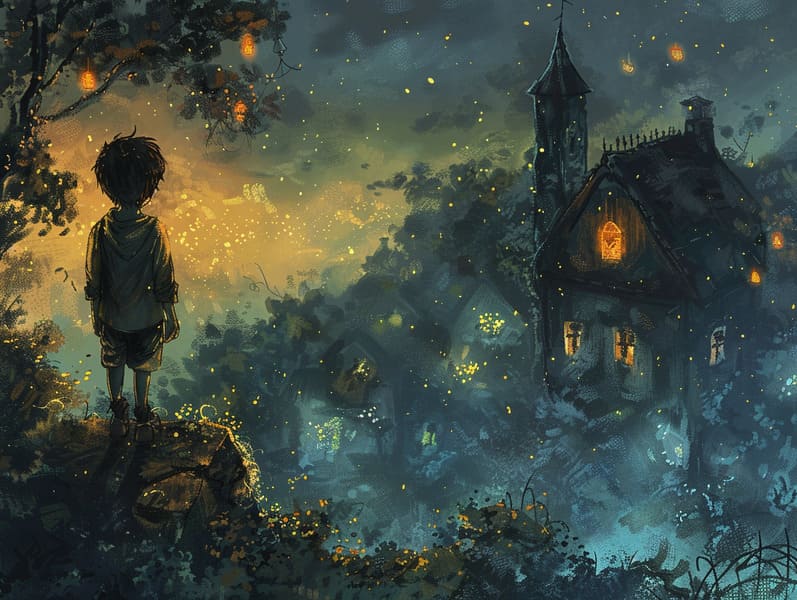The Genesis of Timeless Fairy Tales and Its Steadfast Spell.

Fairy tales have enduring presence. These stories have been conveyed from one generation to the next well before they were ever inscribed. They emerged from a variety of societies, including Asian traditions. They were initially disseminated among older generations, often carrying themes and messages mirroring the societal norms and beliefs of the time.
The Grimm brothers, the two Grimm brothers, were among the first to gather and publish many of these beloved narratives. Their collection, "Grimm's Fairy Stories," included narratives like "Ashenputtel," "Little Brother and Little Sister," and "Little Snow White," which have since become pillars in the world of classic fairy tales. Similarly, Hans Andersen's fantastical narratives, such as "The Little Mermaid," and "The Little Duckling," have touched hearts worldwide, guaranteeing their place in the pantheon of beloved fairy tales.
Though they are centuries old, traditional fairy tales remain as significant as ever, especially as kids' bedtime tales. These whimsical stories are now available in multiple formats, including colorful picture books, whimsical animations, and free fairy tales online.
Their persistent charm can be ascribed to several magical reasons:
Vital Lessons: Ancient fairy tales often convey important moral lessons. Tales like "The Tale of the Boy Who Cried Wolf" teach the merit of sincerity, while "The Hare and the Tortoise" emphasize the virtues of tenacity and humility. These stories offer young ones clear distinctions between virtue and vice, forming their moral compass in a soft yet deep way.
Sympathy and Perception: Ancient fairy tales frequently include personalities facing struggles and tests, stimulating readers to sympathize with their struggles and root for their triumphs. For instance, "The Tale of Beauty and the Beast" shows us the merit of looking past the exterior to recognize the real character of a person, cultivating understanding and appreciation.
Cultural Comprehension: Many classic fairy tales are steeped in the cultural contexts from which they emerged. Learning from these stories can provide intriguing perspectives into different traditions, strengthening a sense of world insight and understanding.
Fantasy and Imagination: The whimsical elements in old fairy tales—enchanted objects—foster children’s innovative ideas. These stories bring readers to extraordinary realms, kindling fantasy dreams and a sense of enchantment that remains a lifetime.
Ancient fairy tales are not only delightful but also informative. They serve as bewitching tools in cultivating various brain and heart skills in young ones. When traditional fairy tales are spoken out loud, they improve verbal skills by showing new terms and meanings and intricate sentence structures. This practice also cultivates listening skills and concentration, as kids follow the story, keen to see what happens next.
Furthermore, analyzing the themes and characters of ancient fairy tales can improve reasoning skills and problem-solving abilities. The young are shown to recognize patterns, forecast, and understand cause and effect. These discussions also facilitate little ones express their thoughts and feelings, nurturing their emotional intelligence.
In today’s information age, the presence of online fairy tales has made these tales more within reach than ever. Internet resources and programs make available wide arrays of Grimm's fairy tales that can be browsed or heard anytime, anywhere. Fairy tales read aloud are particularly sought after, giving an interactive way for young readers to enjoy these delightful tales. Read-aloud stories and voiced videos take characters and settings to life, often joined by magical audio effects and harmonies that heighten the storytelling experience.
The everlasting appeal of classic fairy tales lies in their ability to alter to new eras while holding onto their main lessons. Contemporary reinterpretations of these narratives often present more different figures and modern settings, making them relevant to today’s audience. However, the key lessons of bravery, charity, and even-handedness remain unchanged, continuing to connect with audiences of all ages.
Classic fairy tales also offer a sense of serenity and predictability. They provide a methodical narrative with a evident beginning, middle, and end, often coming to a close with the resolution of conflicts and the triumph of good over evil. This regularity can be placating for young readers, distributing a sense of security in an constantly changing world.
Old fairy tales continue to bewitch and inform new generations, maintaining their magic and impact in modern society. As kids' bedtime tales, they confer upon a perfect blend website of enchantment and education, aiding moral values, empathy, and creativity. The availability of web-based fairy tales and the widespread nature of fairy tales voiced secure that these classic fairy tales remain attainable to new generations.
By preserving and passing on these narratives, we continue to laud the rich tapestry of tales and cultural heritage. Whether you are delving into a artistically illustrated book, seeing a cyber collection, or listening via an voice book, the radiance of classic fairy tales is always within reach. These stories convey of the unending impact of stories and its ability to gather us across centuries and lands.
Even if you are seeing a vibrantly illustrated book, delving into a internet collection, or listening via an voice book, the attraction of old fairy tales is always within reach.
These stories convey of the unfading force of narratives and its ability to bring us together across epochs and places, weaving a spell that charms and informs alike.